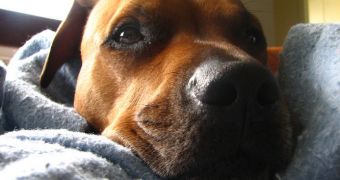Evolution and natural selection are widely recognized as promoters of great biodiversity. They also help produce variations within the same species. This is very obvious in the case of humans. We are part of the same species, but numerous variations exist. In the case of dogs, however, this is taken to an extreme. Starting thousands of years ago, when canines were first domesticated from wolves, we have been involved actively in breeding dogs in manners that resulted in animals best suited for the jobs we selected for them. At this time, the variations in dog skulls' shape and size are amazing.
“We usually think of evolution as a slow and gradual process. But the incredible amount of diversity in domestic dogs has originated through selective breeding in just the last few hundred years, and particularly after the modern purebred dog breeds were established in the last 150 years,” Abby Drake, a researcher on the new study, explains. She is based at the College of the Holy Cross, in Massachusetts. Previous investigations have already determined some of the genes involved in these variations, and researchers were surprised to find out that not many were involved in this process.
What is even more amazing is the large variation that appears today in dog populations, when considering the fact that we have been purposefully and massively cross-breeding dogs for only a few centuries. The family Carnivora, which also includes dogs, is more than 60 million years old, having appeared just a few million years after the dinosaurs went extinct. “For dogs, we have created a whole new set of selection rules. Finding or hunting food is not something they need to be able to do and most modern breeds probably wouldn't be able to. We also arrange their reproduction, and we protect them from anything that might harm them including disease,” Drake tells LiveScience.
The investigation also determined that pet dogs had suffered the most extensive modifications of all other breeds combined. They are more diverse now than guard, hunting and herding dogs combined, which is a lot. This is also very weird considering the fact that herding dogs were the first variety used by humans, whereas hunting dogs were among the first types of canines to be selectively bred to ensure animals better and better equipped to point, stock and retrieve prey. “[Pet] dogs are bred for their looks not for doing a job, so there is more scope for outlandish variations, which are then able to survive and reproduce,” University of Manchester study researcher and biologist Chris Klingenberg adds.

 14 DAY TRIAL //
14 DAY TRIAL //